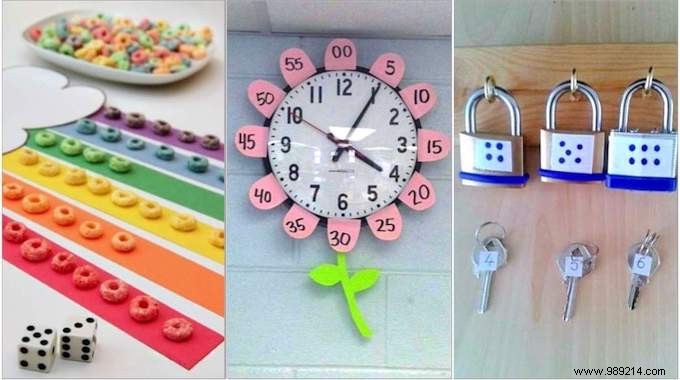
Your kids don't like math?
Learning to count, doing mental arithmetic, multiplication... Not always easy!
And yet... With fun activities and games, counting can be fun!
Yes, just have fun to learn more easily.
Whether the children are in kindergarten, primary or even in college, it's always easier with playful calculation.
Here are 18 awesome and easy-to-do activities to get kids finally loving math! Watch:
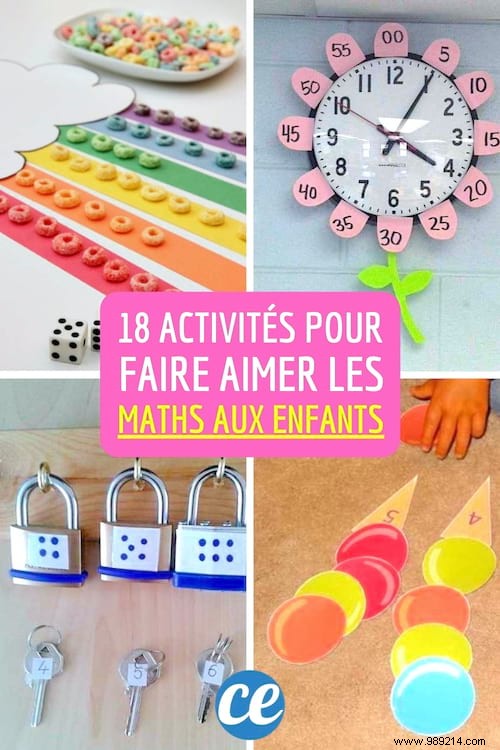
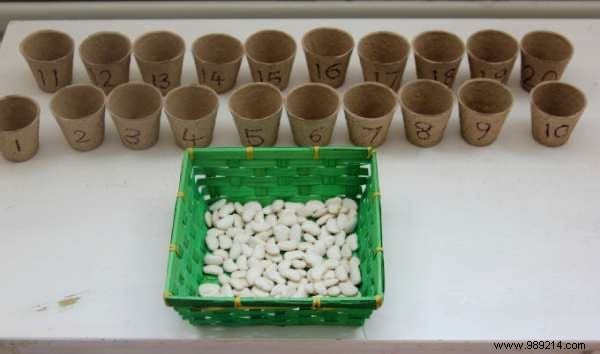
For this activity, you only need cups, a marker and dried beans.
Start by numbering the cups from 1 to 20.
Then have the children read the number on the cup and place the correct number of beans in each cup.
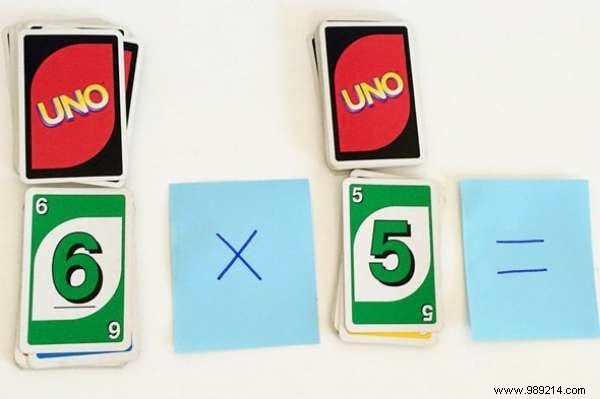
Learning the multiplication tables is no fun...
And it's even less so when you have to recite them!
But with a game of UNO, it starts to be a lot more fun.
Take a set of UNO (from which you remove the special cards), Post-It notes and a marker.
Choose the operations (additions, subtractions or multiplications) and note the sign on a Post-It.
Then ask the children to draw the cards and find the correct result.
Great for mental math! When you're having fun, it's always easier to learn!
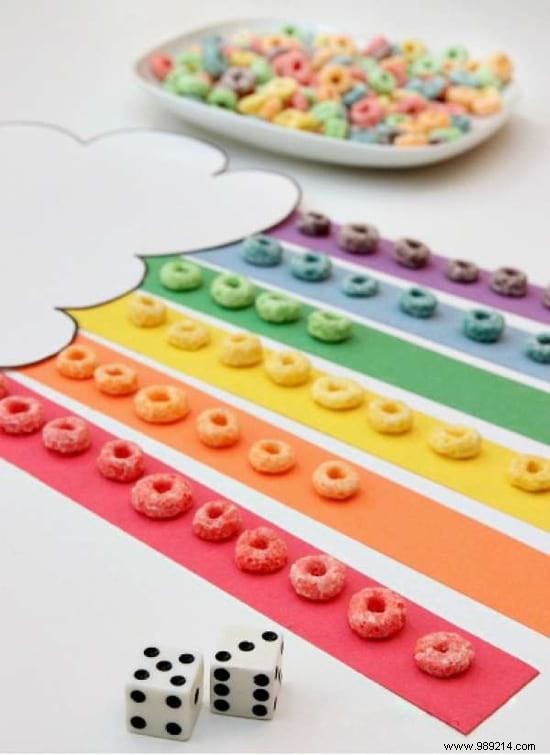
Why not start learning something new from breakfast?
This activity requires two dice, strips of colored paper and cereal.
Cut out strips of paper of different colors.
To make it even more fun, you can create a little rainbow.
Then you have to roll the dice and add the two numbers obtained.
From there, the child chooses a color and places the exact number of cereals of the same color.
The object of the game is to put the correct number of cereals of the same color on the colored strip.

With this funny crocodile, it's easy to compare 2 quantities!
Just create the comparison sign with colored cardboard.
We can make a crocodile mouth with 2 big eyes.
And all that remains is to make the comparisons between fruits, cars, sweets or numbers!
So smaller or bigger? It's simple and awesome!
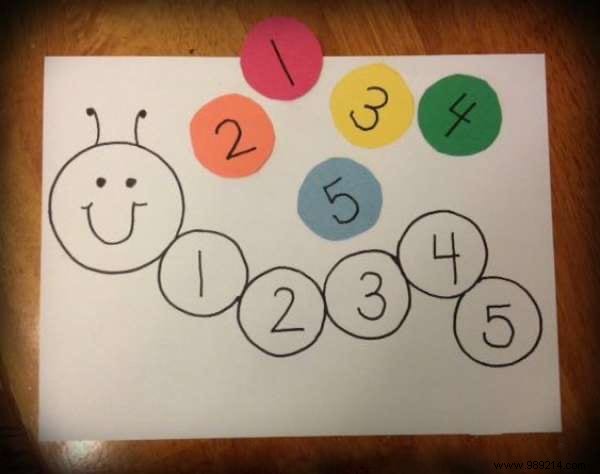
This pretty caterpillar is the friend of toddlers to teach them to count to 5.
For this, you have to draw a caterpillar with 5 empty circles on a white sheet.
You don't even have to be an artist to make your caterpillar a success!
Number the circles from 1 to 5.
In colored paper, cut out 5 circles which you also number from 1 to 5.
Your little one will just have to count by placing each numbered circle on the corresponding part of the caterpillar.
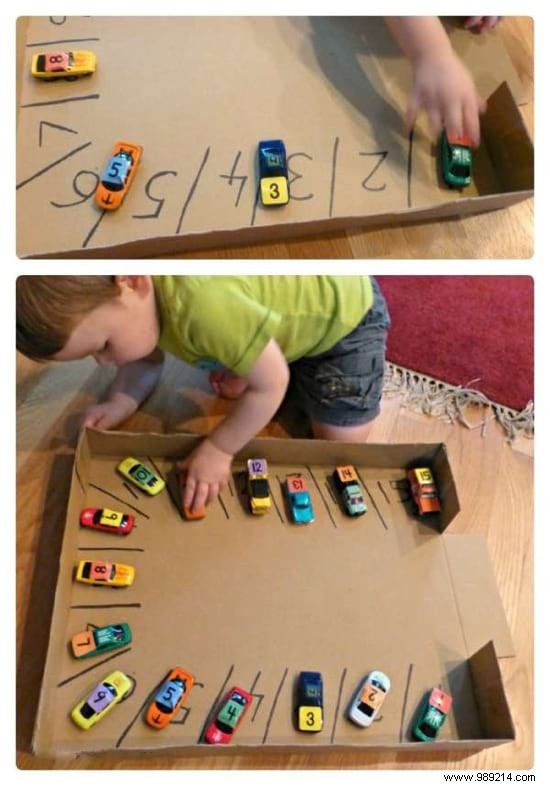
Children spend hours playing with toy cars!
An excellent excuse to teach them to recognize numbers.
To do this, take a pizza box that you open on one side.
With a marker, draw the parking spaces with a number per space.
Also stick a number on each car.
Your child will have to park each car in the parking space that corresponds to its number.
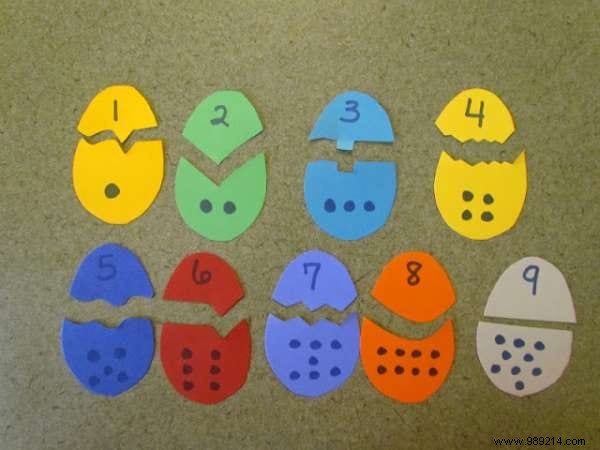
Learning numbers and recognizing colors is super easy with this homemade puzzle!
Simply draw eggs on sheets of colored paper and cut the egg in half.
Then number each egg on one part and draw the corresponding number of dots on the other part.
By association of colors, your little one will be able to easily reconstruct the puzzle, learn to recognize a numbered writing and associate it with a quantity.
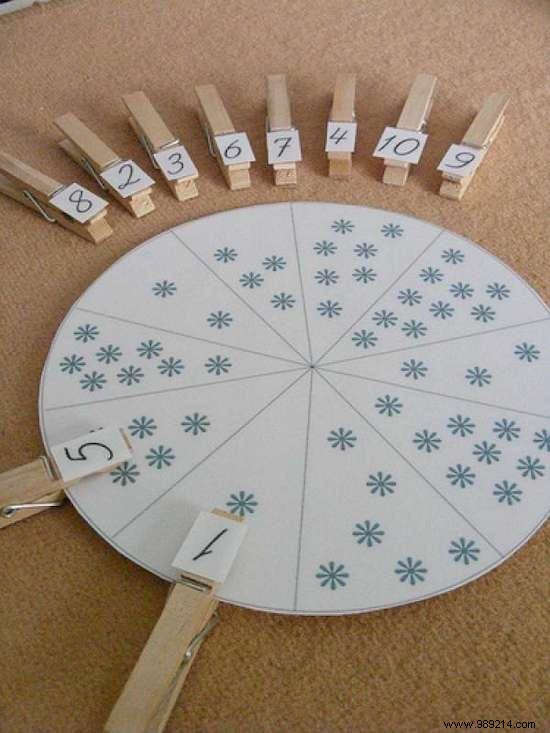
It is again a question of associating a number with a quantity and knowing how to count up to 10.
This activity will be perfect for children from 4 or 5 years old.
This activity requires 10 clothespins, a large circle or a paper plate.
Each clothespin is numbered from 1 to 10.
Then divide the circle into 10 equal parts in which it remains only to draw the number of stars corresponding to each number.
The child must associate each pin with the corresponding part of the circle.

This is another great counting activity for preschoolers.
Draw cones and scoops of ice cream on paper of different colors.
Cut them out and mark a number on each cone.
The object of the game is to put the correct number of scoops of ice cream on the corresponding cone.
Maybe the winners will get a real ice cream!

Can you count from 1 to 10? Easy!
Print an image and glue it on card stock.
Cut it into 10 strips which you number from 1 to 10.
Your child must piece together the puzzle using the sequence of numbers.
Not only will your child learn to do a puzzle, but they will also learn to count to 10.
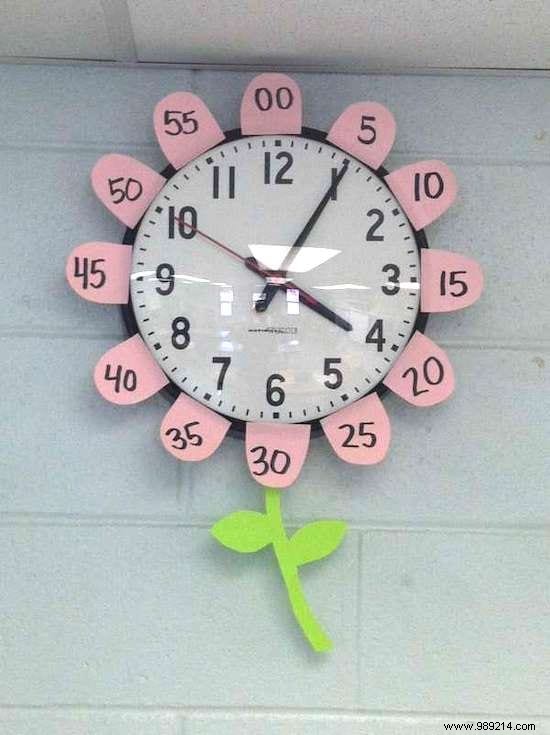
Not easy for children to learn to tell the time!
Fortunately, by turning a clock into a flower, it becomes much easier!
Indeed, each petal corresponds to a number of minutes.
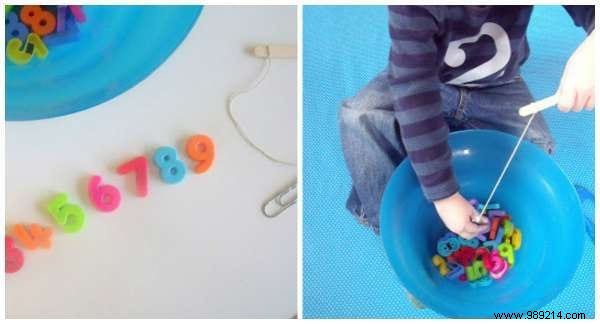
Do you have magnetic numbers and letters?
Then you can do this activity for your child.
This will develop his agility and help him recognize numbers and letters.
To do this, simply put the numbers and letters in a large bowl.
Take a stick and tie a string to it.
Put a paper clip on the end of the line and your fishing rod is ready!
Your child can go fishing for letters and numbers, which will help them recognize and memorize them.
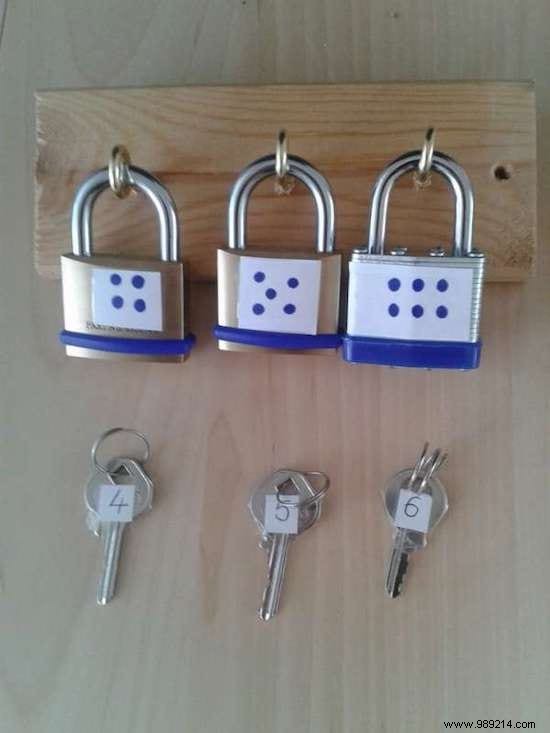
Great idea to teach children to associate a quantity with a number!
Take 3 key padlocks. On each key, put a number and draw the corresponding number of dots on the padlock.
Now let your child find the right key!
If the padlock opens, you win!
He will thus learn to associate a number and a quantity and in addition, he will develop his fine motor skills.
It's even funnier if the padlock opens a treasure chest with a little surprise inside!
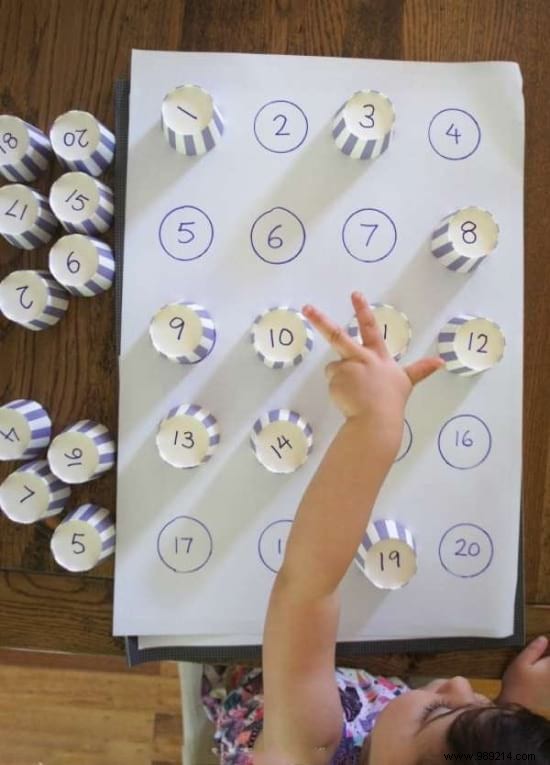
Here is a very simple activity to learn to count, but this time up to 20.
Draw circles with numbers on a sheet of paper and number the cups.
Your child will have to associate each cup with the corresponding circle.
This game will help him recognize numbers.
You can even add a little extra difficulty by timing the game!
You can also stimulate the memory of children by turning the cups upside down to hide the number. Just like in a memory game!
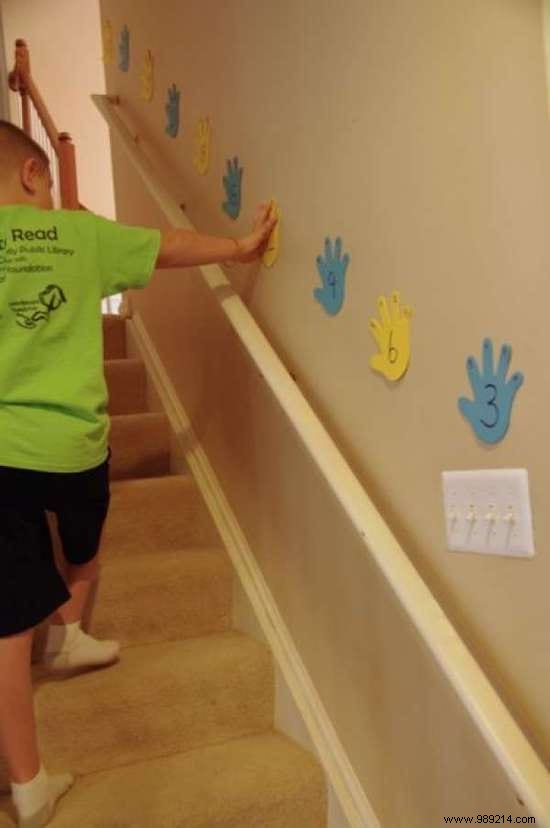
This creative idea will appeal to children in primary school who need to learn their multiplication tables.
Hand shapes need to be cut out of colored card stock sheets or colored foam sheets.
Then on each hand, you have to write the different operations on the fingers and the result roughly on the palm of the hand. For example:3 x 2 =6
Then hang your hands on a wall on a staircase, on the fridge...
This game is super effective for learning multiplication tables, as it is very visual and engages the whole body in learning.
Perfect for kids who are on the move! Instead of making the effort of sitting at a table, they learn while on the move. Plus, every time they go up or down the stairs, they can brush up on their multiplication tables!
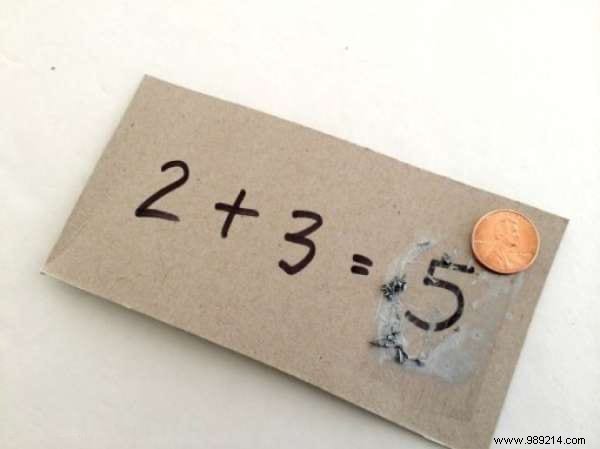
This idea is super original! On a piece of cardboard, write a simple calculation operation.
Hide the result with a piece of tape. Or even better:mix it with acrylic paint and a little dishwashing liquid and apply it to the result.
Once the mixture is dry, ask your child to solve the calculation.
He will only have to scratch the card to discover the result. So right or wrong? It's magic!
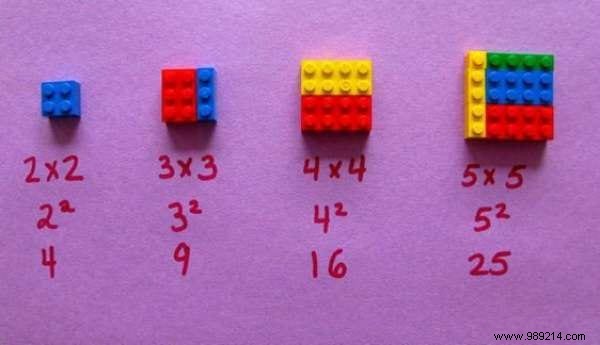
Need fun tutoring for your eldest who doesn't understand squared numbers?
This activity obviously concerns older children, in college in general.
But it is very useful to visualize squared numbers and understand them more easily.
Just take some Lego bricks, a marker and some paper.
For each square number, match the correct Lego combination.
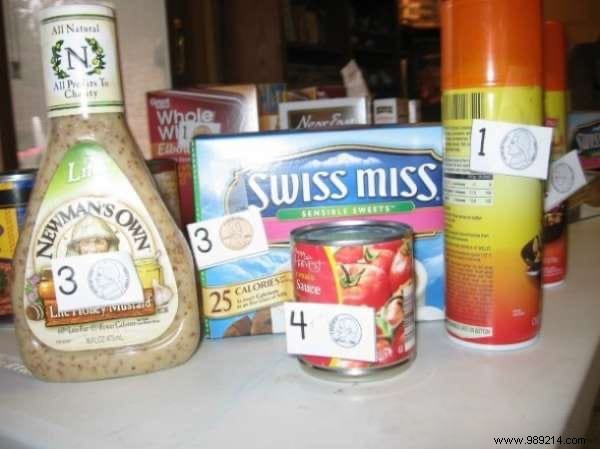
Take a few cans of food out of the cupboard and stick a price on them.
Create some fake coins out of paper.
The merchant's game can then begin.
Your child plays the role of customer or seller, it doesn't matter.
The goal is for him to manipulate the coins to count.
Your turn...
Have you tested these tricks to make children love math? Let us know in the comments if it worked for you. We can't wait to read you!